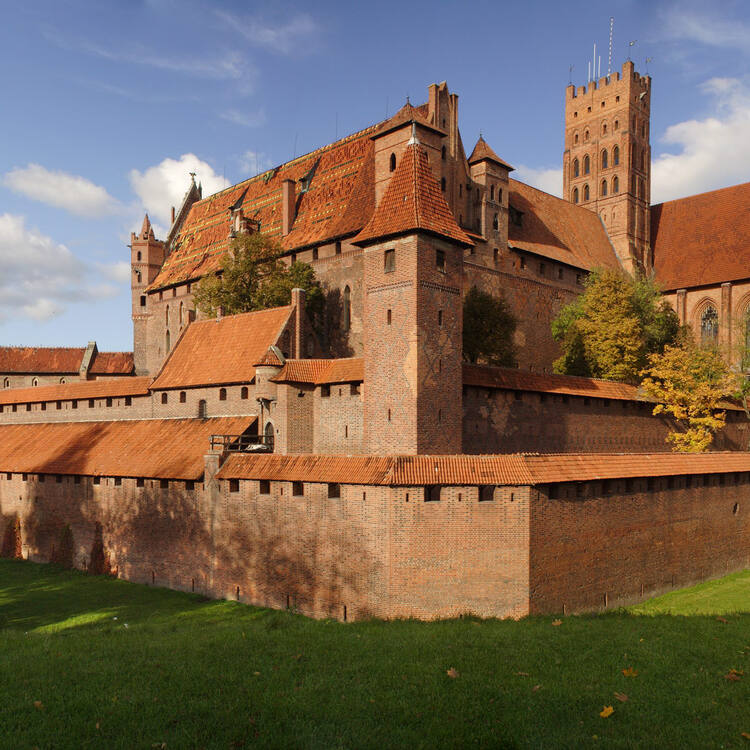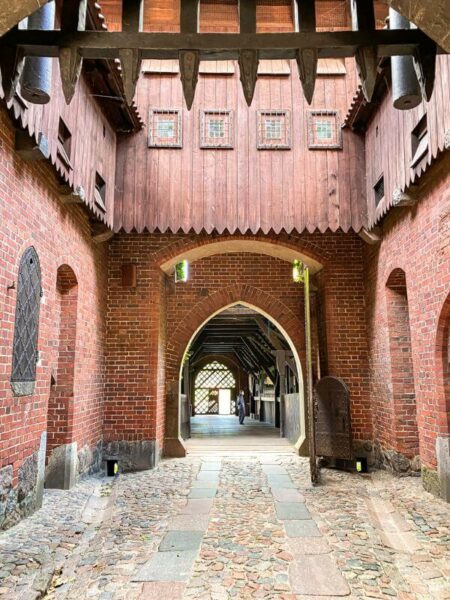The Ruins of Malbork Castle in Poland

The ruins of Malbork Castle in Poland stand as one of Europe’s most captivating historical remnants. Once a stronghold of the Teutonic Order, this majestic fortress is a testament to medieval military architecture and a UNESCO World Heritage site. Located in the northern region of Poland, Malbork Castle is the largest brick castle in the world and draws visitors from around the globe with its stunning size and rich history.
A Glimpse into Malbork Castle’s History

The construction of Malbork Castle began in 1274 by the Teutonic Knights, a German medieval military order. Over the centuries, it expanded into a formidable fortress and administrative center. Originally named Marienburg, the castle was designed to be a fortified residence for the order’s Grand Master. By the 14th century, it was not only a symbol of military power but also an influential center of trade, culture, and religion in medieval Europe.
At its peak, the castle was home to over 3,000 inhabitants, including knights, soldiers, and artisans. The castle’s intricate design consisted of three distinct parts: the High Castle, the Middle Castle, and the Lower Castle, all interconnected by walls, moats, and gates. Each section played a crucial role in the defense and functioning of the complex.
Decline and Destruction of Malbork Castle

The decline of Malbork Castle began in the 16th century, particularly after the dissolution of the Teutonic Order and the transition to Polish rule. The castle’s importance diminished as its military and strategic functions became obsolete. However, the most significant blow came during World War II, when Malbork Castle was heavily damaged by air raids, resulting in the collapse of several parts of the structure.
After the war, restoration efforts were initiated, but the damages from the bombings remained visible for decades. Today, visitors can see the ruins of the castle, some sections having been carefully restored while others remain in a state of disrepair, offering a glimpse into the castle’s former grandeur.
Exploring Malbork Castle Today

Despite its damage, Malbork Castle remains a popular tourist destination in Poland. The restored areas showcase impressive elements of medieval craftsmanship, including the grand halls, chapels, and the stunning courtyard. Visitors can walk along the castle’s high walls and imagine what life might have been like during its prime.
A visit to Malbork Castle provides insight into the complex history of the Teutonic Order, the architectural advancements of the Middle Ages, and the resilience of a structure that has withstood centuries of war, political upheaval, and natural wear. The castle also houses a museum that exhibits medieval weaponry, knightly armor, and the castle’s original artifacts, allowing for a deep dive into the castle’s role in shaping Polish history.
The Legacy of Malbork Castle

Today, Malbork Castle is not only a symbol of Poland’s medieval past but also an important cultural heritage site. It serves as a reminder of the Teutonic Knights’ legacy and the architectural brilliance of the era. Though much of the castle lies in ruins, the structure remains a proud and fascinating landmark, offering a poignant glimpse into the medieval world.
Visiting the ruins of Malbork Castle provides a unique opportunity to connect with history. It’s a place where the past and present collide, leaving a lasting impression on anyone who steps foot within its walls.